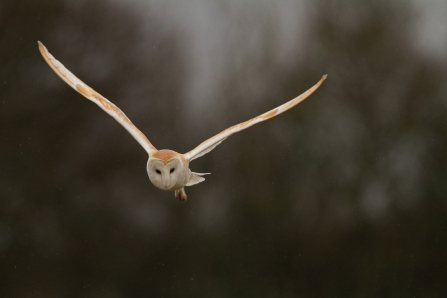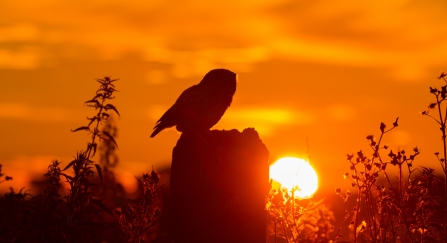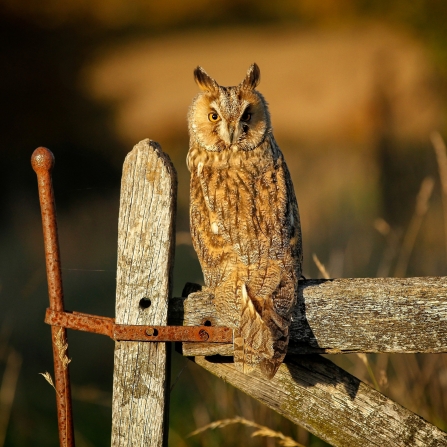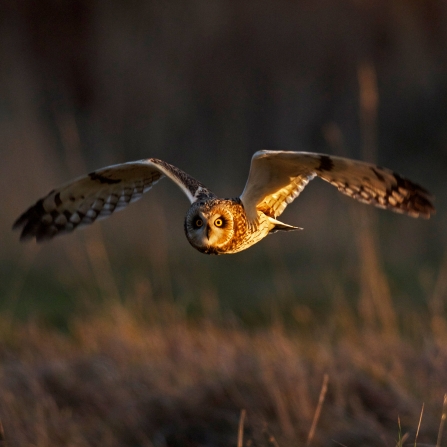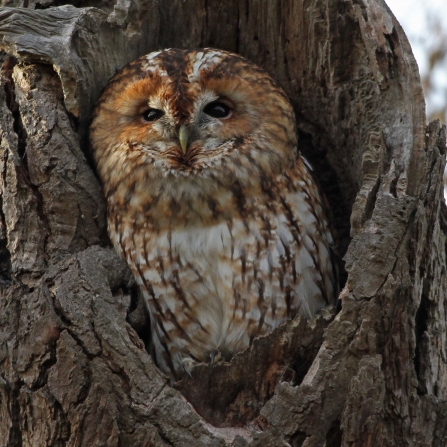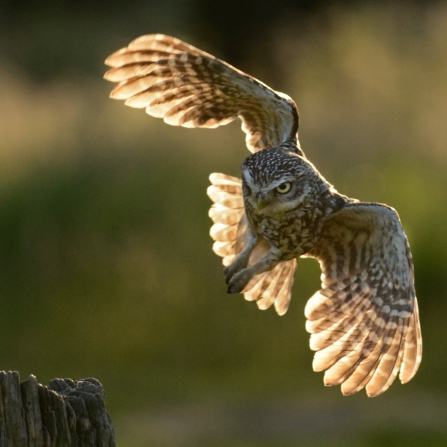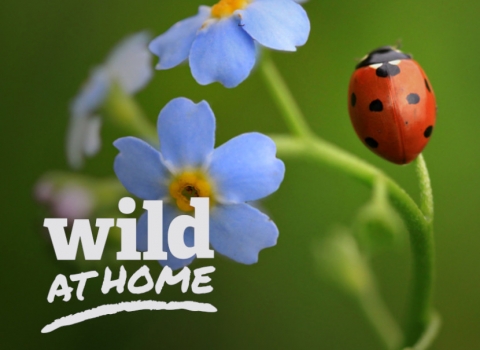Owls have adapted to become fearsome night time hunters. An owl’s best weapon is its incredible hearing. Their flat faces and specialised feathers focus sound towards their asymmetrical ears, allowing them to accurately pinpoint their prey under leaves, plants and snow from even the slightest sound.
Owls are famously able to look ‘backwards’ by turning their head through 270 degrees. Although they have binocular vision their forward-facing eyes cannot move in their sockets, meaning they have to turn their heads instead. Contrary to popular belief, an owl’s vision is only slightly better than ours and much of their ‘night vision’ is actually due to their excellent hearing.
Unlike most other birds, owls make virtually no noise when they fly. They have special feathers that break the air flow over their wings to reduce the sound and their soft, velvety down further muffles any noise.


